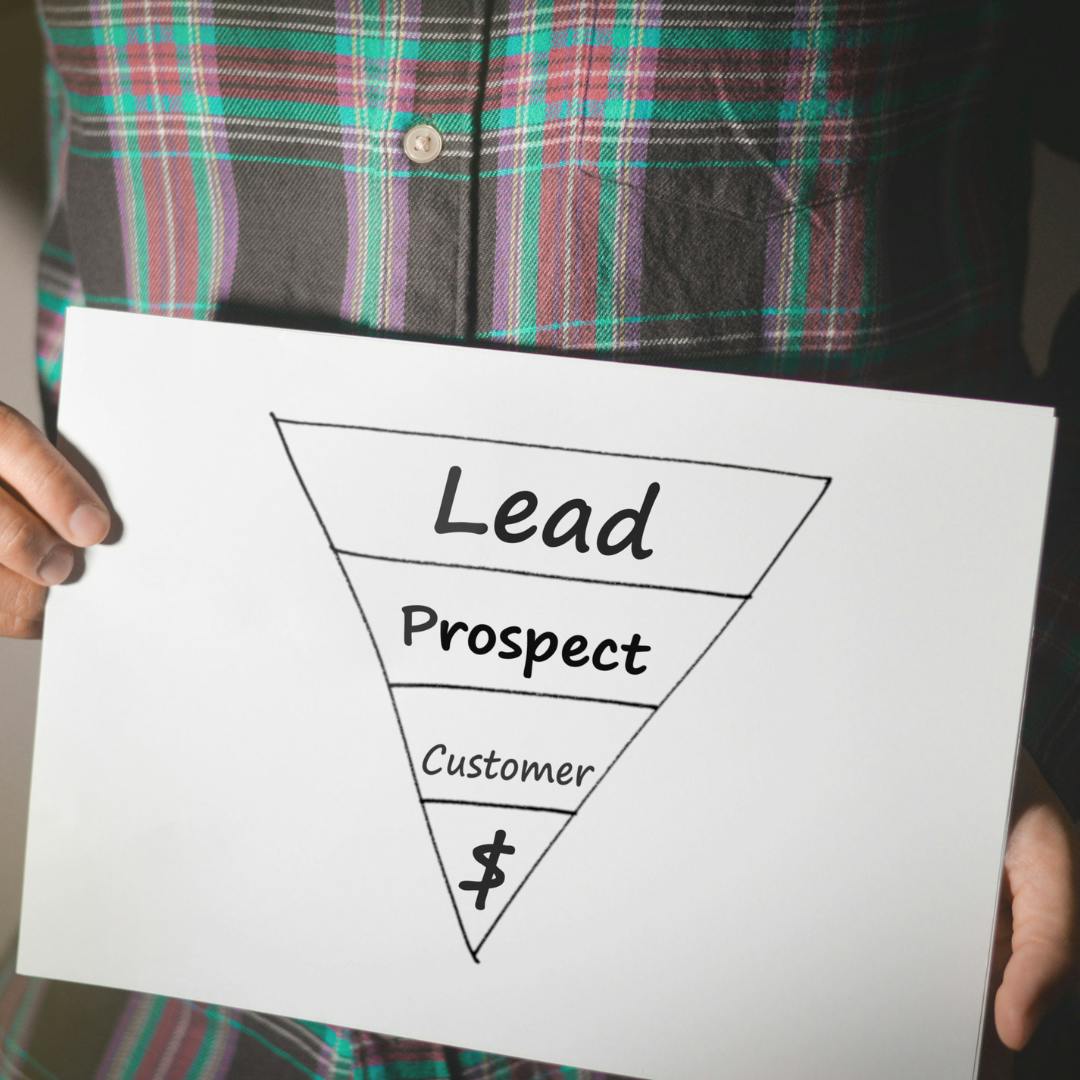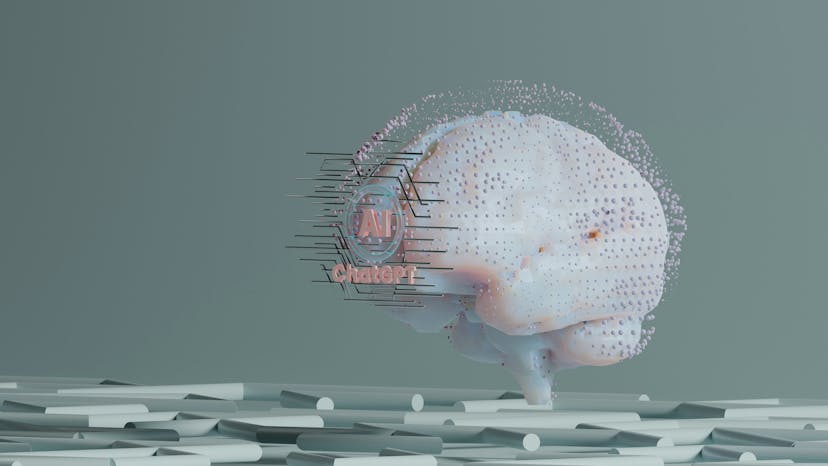
AI Won’t Save Your Marketing Funnel — But It Can Help You Fix It
We often have B2B SaaS companies asking us the same question: "How can we use AI to fix our marketing funnel?"
The short answer is, it can’t. AI won't magically transform a fundamentally flawed strategy into a revenue-generating machine. But here's what it can do: amplify what's already working and expose what isn't.
For scaling companies in competitive markets, the temptation to treat AI as a silver bullet is understandable. Marketing teams are under pressure to do more with less, hit aggressive growth targets, and prove ROI on every dollar spent. AI promises efficiency, personalization, and insights at scale. The problem? It also amplifies every strategic mistake you're already making.
Understanding the Real Limitations of AI in Marketing Funnels
AI excels at pattern recognition, data analysis, and task automation. What it can't do is understand the nuanced emotional drivers that move your prospects from awareness to purchase. For B2B SaaS companies, especially, buying decisions involve complex stakeholder dynamics, risk assessment, and trust-building that no algorithm can fully grasp.
Take content creation, for example. AI can generate blog posts about cybersecurity trends or e-commerce optimization tactics, but it can't understand why a CISO at a mid-market company cares more about compliance documentation than feature comparisons. That insight requires human understanding of market dynamics, customer pain points, and competitive positioning.
The bigger issue is when marketing teams use AI to compensate for weak strategy rather than enhance strong foundations. We've seen companies deploy sophisticated AI tools while operating with outdated buyer personas, unclear value propositions, and disconnected customer journeys. This approach only leads to more efficient execution of ineffective strategies.
Quantitative data tells you what happened; qualitative insights tell you why it happened. AI excels in the former but is useless in the latter. For companies building complex B2B funnels, the "why" often matters more than the "what."
The Magic Bullet Misconception
Here's the uncomfortable truth about AI in marketing: garbage in, garbage out.
If your Ideal Customer Profile (ICP) is based on assumptions rather than research, AI will just help you target the wrong people more efficiently. If your messaging doesn't resonate with real customer challenges, AI will help you scale that ineffective messaging across more channels.
We've worked with cybersecurity companies that spent months building AI-powered lead scoring models, only to discover their fundamental problem was messaging that focused on features instead of business outcomes. The AI was working perfectly—it was just optimizing for the wrong metrics. This misconception is particularly dangerous for scaling companies where every marketing dollar needs to count.
When teams expect AI to independently solve fundamental strategy problems, they often delay addressing the real issues at hand. Meanwhile, competitors with solid foundations are using AI to amplify strategies that actually work.
AI can't understand your brand voice, anticipate market shifts, or make strategic pivots based on competitive intelligence. It's a powerful amplifier, not a strategic thinker. The companies that succeed with AI understand this distinction.

Building the Right Foundation for AI Success
Effective AI implementation starts with a crystal-clear strategy, not technology deployment. For B2B companies, this means having a well-defined Ideal Customer Profile that goes beyond demographics to include specific business challenges, decision-making processes, and buying journey stages.
Your ICP should answer questions like: What keeps your prospects awake at night? Who else is involved in their buying decisions? What objections do they raise during sales calls? How do they prefer to consume information? AI can help you execute against these insights, but it can't generate them. Customer journey mapping becomes critical when AI enters the picture. If prospects are dropping off at specific funnel stages, AI can help you identify patterns and optimize touchpoints. But first, you need to understand the intended journey and measure the right conversion points.
Data quality matters more with AI than traditional marketing approaches. Clean, structured data enables AI to identify meaningful patterns and make accurate predictions. Poor data quality leads to flawed insights and misguided optimization efforts. For SaaS companies, especially, integrating AI tools with existing tech stacks requires careful planning. The goal is seamless data flow between platforms, not another siloed tool that creates more work for your team.
Where AI Adds Value
When used strategically, AI can significantly enhance marketing performance across several key areas. Content optimization becomes more sophisticated—AI can analyze which topics, formats, and messaging approaches drive the most engagement with your specific audience segments.
SEO strategy gets more precise with AI-powered keyword research and content gap analysis. Instead of guessing what prospects search for, you can identify actual search patterns and content opportunities that align with your buyer journey stages.
Paid media optimization sees immediate benefits from AI-driven bidding strategies and audience targeting. For e-commerce companies managing multiple product lines, AI can optimize ad spend allocation based on real-time performance data and inventory levels.
Lead scoring becomes more accurate when AI analyzes behavioral patterns across your entire funnel. Instead of relying on basic demographic scoring, you can identify prospects who show genuine buying intent based on their engagement patterns and content consumption.
Personalization at scale becomes feasible with AI analyzing individual prospect behavior to customize email sequences, website experiences, and content recommendations. For B2B companies with long sales cycles, this level of personalization can significantly impact conversion rates.
The Hidden Risks of AI Over-Reliance
The statistics are sobering: up to 42% of AI marketing initiatives fail before launch, primarily due to a lack of strategic alignment. For scaling companies, this represents significant wasted resources and missed opportunities.
One major risk is message inconsistency across channels. When different AI tools generate content without strategic oversight, prospects receive conflicting information that erodes trust. This is particularly damaging for cybersecurity and SaaS companies where credibility is essential.
Legal and compliance risks emerge when AI-generated content makes claims your company can't support. In regulated industries, this can create serious liability issues. Human oversight remains essential for ensuring accuracy and compliance.
Another overlooked risk is the decline in team skill. When marketing teams become too dependent on AI for creative and strategic thinking, they lose the ability to adapt quickly to market changes or competitive threats. The most successful companies use AI to enhance human capabilities, not replace them.
Preserving the Human Element
AI presents exciting possibilities, but the real threat to SEO effectiveness remains poor strategic Strategic thinking, creative problem-solving, and empathy remain uniquely human strengths that AI cannot replicate. For B2B companies building relationships with enterprise clients, these capabilities often determine success more than operational efficiency.
Customer relationship building still requires human intuition to navigate complex stakeholder dynamics and handle objections that weren't anticipated in the AI training data. The most effective sales and marketing teams use AI to identify opportunities and optimize processes, while humans handle relationship building and strategic conversations.
Market adaptation happens fastest when human judgment guides AI capabilities. When competitive landscapes shift or new regulations emerge, human teams can pivot strategies quickly while AI tools catch up with new data patterns.
The companies thriving with AI maintain strong human-led strategic oversight while leveraging AI for execution optimization. This balance allows for both efficiency gains and strategic agility.
Strategic Integration Best Practices
Successful AI integration follows a clear hierarchy: strategy first, then tools. Start by auditing your current marketing funnel performance to identify specific optimization opportunities where AI can add value. Focus on fixing foundational issues before deploying AI solutions. If your messaging doesn't resonate with prospects, AI will just help you deliver ineffective messages more efficiently. Address core strategy problems first, then use AI to scale what works.
Implement AI tools gradually, starting with areas where you have clean data and clear success metrics. This allows your team to learn how AI impacts performance before expanding to more complex use cases. Establish governance frameworks for AI-generated content and decisions. This includes human review processes, brand voice guidelines, and compliance checks that ensure AI output aligns with your company standards.
Regular evaluation and optimization ensure AI tools continue supporting business objectives as your market and company evolve. The most successful implementations treat AI as an ongoing optimization tool, not a set-and-forget solution.
The future belongs to companies that combine human strategic thinking with AI operational efficiency. For B2B SaaS, eCommerce, and cybersecurity companies, this means using AI to amplify effective strategies while maintaining human oversight of the decisions that matter most.
At Be the Buzz, we help scaling companies build AI-enhanced marketing strategies that drive real growth. Let's discuss how we can leverage AI as a strategic amplifier, not a replacement for solid marketing fundamentals.




